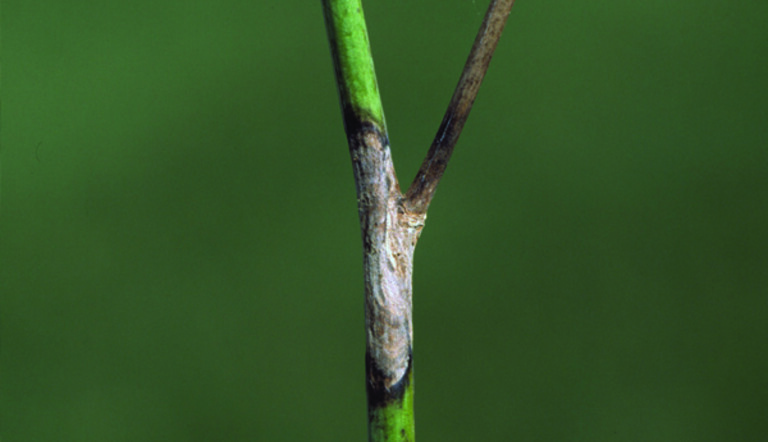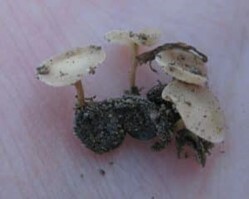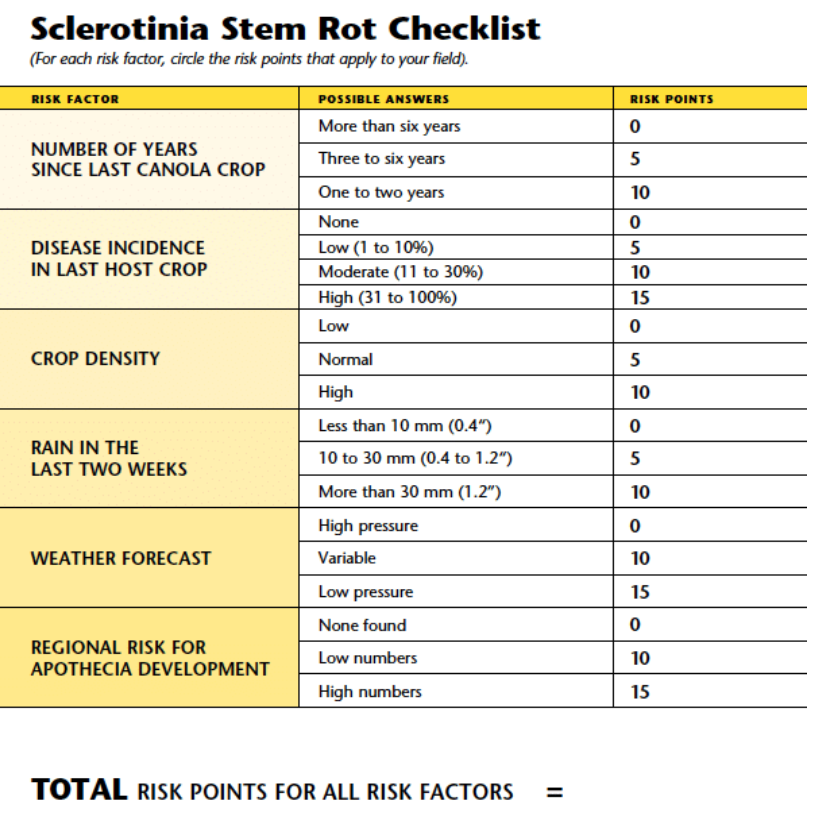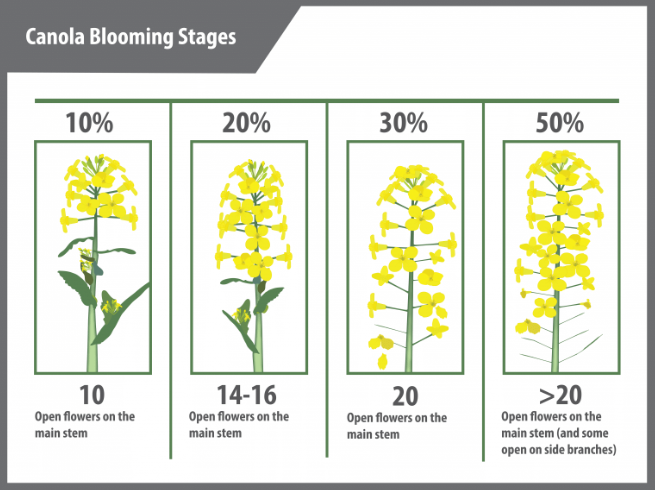
Managing Sclerotinia in Canola

If inoculum levels are high and the canola crop canopy is dense, yield losses from Sclerotinia can exceed 50%.1 This can be a result of smaller or fewer seeds, premature ripening and/or shatter loss.
There are a number of agronomic and environmental factors that contribute to the risk of Sclerotinia in canola. From an agronomic perspective – crop rotation, lodging and variety selection are some of the more common factors. What can be frustrating is that the factors that often create a healthy crop and a dense canopy result in greater risk for sclerotinia infection. For environmental factors – the list is driven primarily by precipitation, relative humidity and soil moisture. Soil moisture is important since the sclerotinia spores are released only when apothecia (tiny mushroom-like structures) germinate, which requires the soil to be saturated for about 7 days2.
Photo of Apothecia Source: Canola Council of Canada
Determining the risk of sclerotinia infection can be complicated and there have been models with varying levels of accuracy. Some of the more basic methods of determining risk of sclerotinia can include the presence of apothecia, wetness of the canola crop canopy throughout the day, and the Sclerotinia stem rot checklist from the Canola Council which can be found here.
Sclerotina Checklist Photo Source: Canola Council of Canada
A score over 40 is when the risk of Sclerotinia is moderate to high. and when growers should consider a fungicide application.
There are a couple of products from ADAMA that provide great control of sclerotinia in canola:
| Fungicide Product | Active Ingredient | Ac/unit | Rates |
|---|---|---|---|
| MAXENTIS® | Prothioconazole + Azoxystrobin | 19 ac/jug | 443 ml/ac |
| SORATEL® | Prothioconazole | 34-40 ac/jug | 240-280 ml/ac |
MAXENTIS is a premium fungicide that provides control of Sclerotinia in canola. It contains 2 active ingredients and 2 modes of action (Gr. 3 – Prothioconazole & Gr. 11 – Azoxystrobin) which help to mitigate the risk of fungicide resistance. MAXENTIS should be selected in situations where the risk of sclerotinia is high due to short canola rotations and frequent precipitation shortly before flowering. MAXENTIS will also be a benefit if the canola crop canopy is very dense. MAXENTIS comes with Asorbital® Formulation Technology which improves penetration of the active ingredients into the plant material to improve protection against sclerotinia.
SORATEL is a fungicide product that contains a single active ingredient (Group 3 – prothioconazole). SORATEL will provide control of Sclerotinia and may be an option when growers are unsure if the risk of sclerotinia is high or the crop canopy is a bit thinner and prone to drying out over the course of the day. SORATEL also includes Asorbital® Formulation Technology.
Getting the most out of your fungicide application!
There 2 critical factors that need to be done in order to get the most out of your fungicide application – proper timing and coverage.
Proper timing
The ideal timing of a fungicide application for Sclerotinia in canola is prior to petal drop. The Sclerotinia spores that are on the petals and land on the stems it is where the infection starts. While the labels state to apply from 20-50% bloom, the best time to apply is before petals start to fall and the target should be 30% bloom. The first petals to drop are also the petals with the greatest chance of causing a stem infection and affecting entire plants and not just side branches. Growers need to scout fields closely as a crop can move 10% bloom in 2-4 days3
Canola Blooming Stages Photo Source: Canola Council of Canada
Proper timing
The ideal timing of a fungicide application for Sclerotinia in canola is prior to petal drop. The Sclerotinia spores that are on the petals and land on the stems it is where the infection starts. While the labels state to apply from 20-50% bloom, the best time to apply is before petals start to fall and the target should be 30% bloom. The first petals to drop are also the petals with the greatest chance of causing a stem infection and affecting entire plants and not just side branches. Growers need to scout fields closely as a crop can move 10% bloom in 2-4 days3
Coverage
To get the most out of your MAXENTIS or SORATEL fungicide application remember to keep your water volume up as coverage of the canola petals is critical. Using a minimum of 10 gallon/ac of water is recommended.
Read and follow all label instructions to optimize performance of your fungicide application. Any questions can be directed to your local Area Business Manager or Technical Sales Agronomist here.
Sean Dilk -Technology Development and Transfer Manager
Sources:
- Saskatchewan Agribusiness, Farmers and Ranchers https://www.saskatchewan.ca/business/agriculture-natural-resources-and-industry/agribusiness-farmers-and-ranchers/crops-and-irrigation/disease/sclerotinia#:~:text=Sclerotinia%20in%20Canola,per%20cent%20crop%20yield%20loss.
- North Dakota State University – Assessing risk of Sclerotinia on basis of environmental conditions
- Canola Council of Canada Fungicide timing - https://www.canolacouncil.org/canola-encyclopedia/diseases/sclerotinia-stem-rot/



